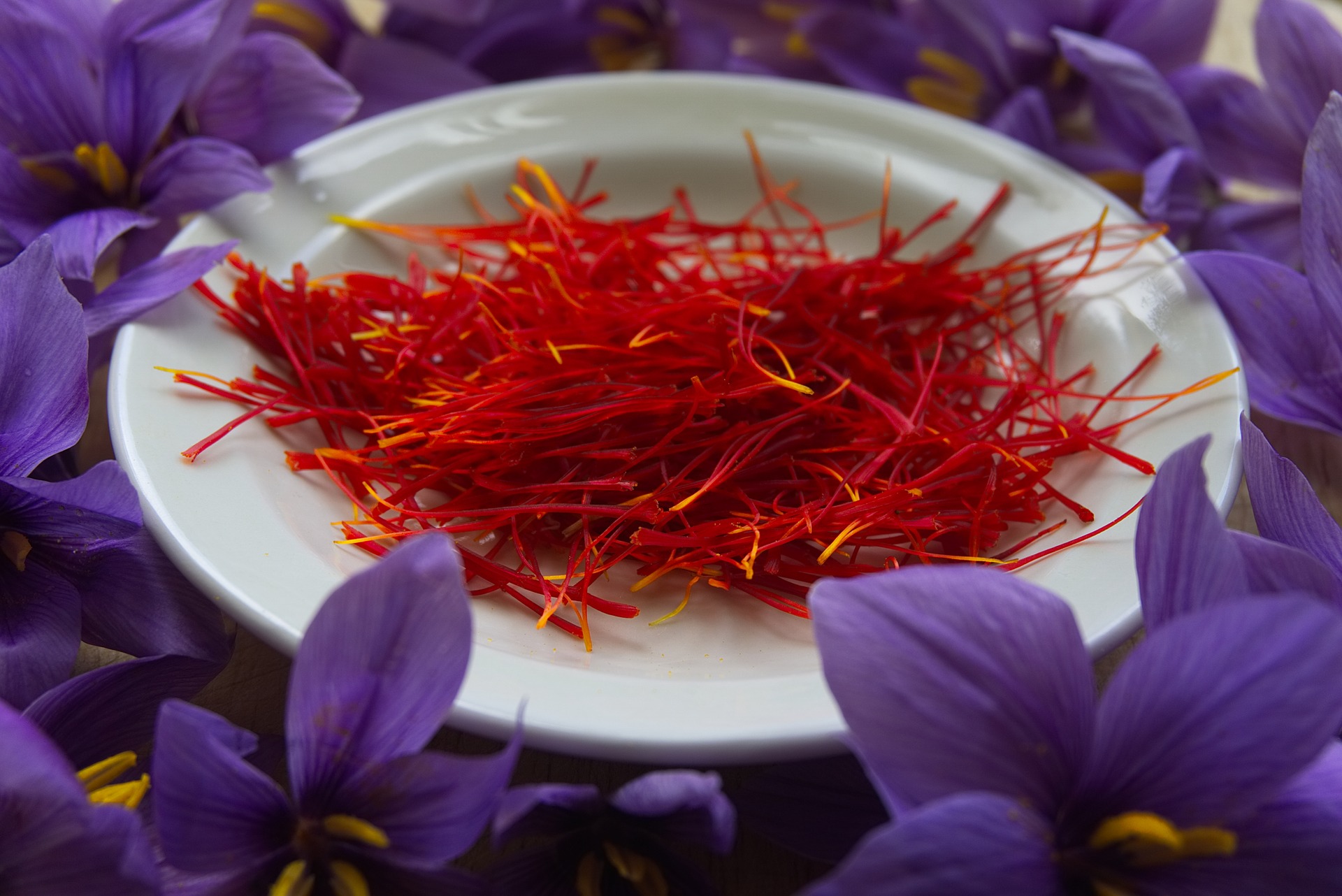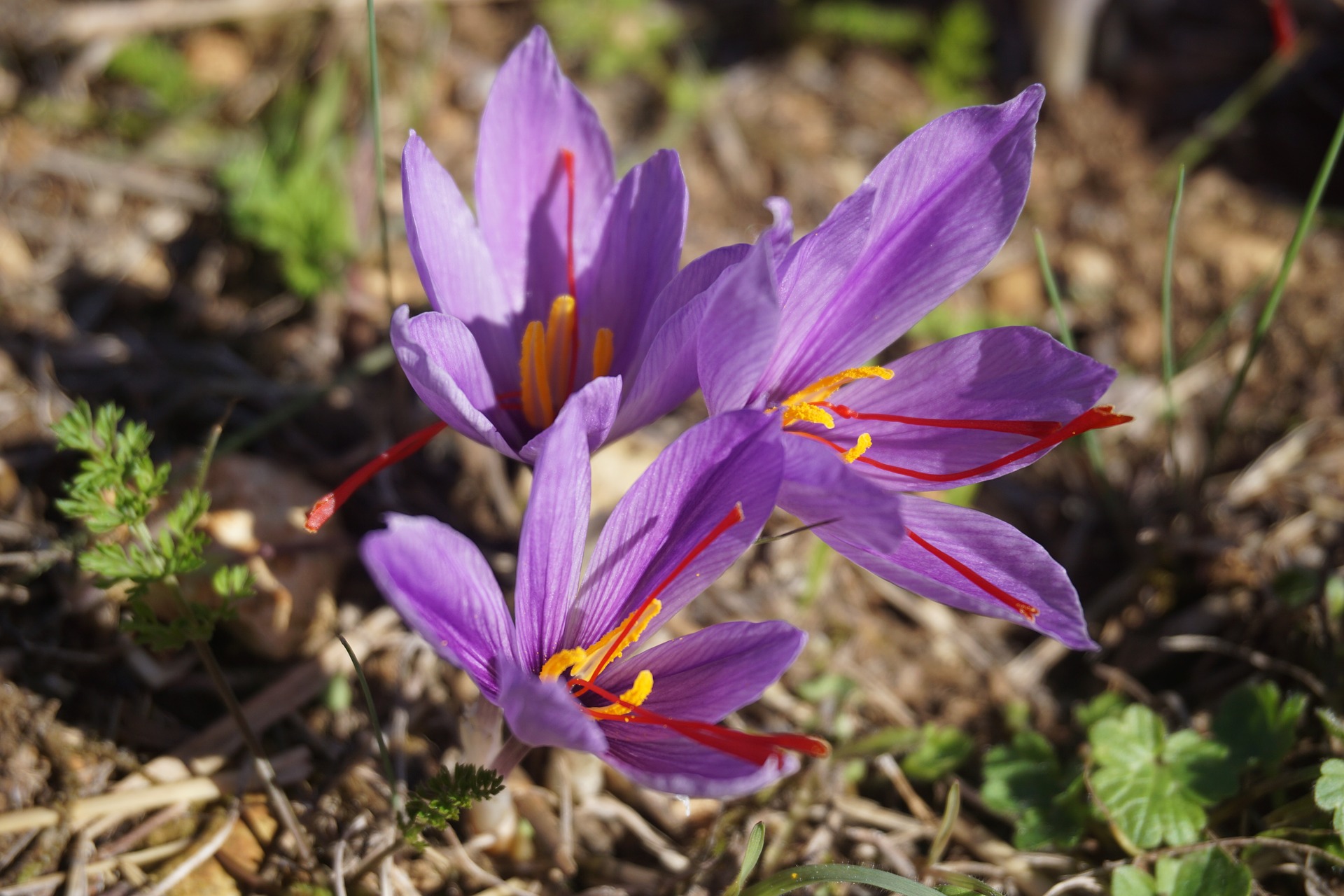
Saffron ( Crocus Sativus)
Plant:
The saffron flower is harvested from the crocus sativus, a plant in the Iridaceae family, which can be lilac, purple or white in color. It is the long orange stigmas, horn-shaped, which after being dried give rise to saffron. A rare commodity, because to obtain a kilo of saffron, more than 150,000 flowers are needed in which its stigmas – each flower gives only three stigmas – are picked by hand. It is no coincidence that on the international market, a kilo, of what is called red gold, varies between one thousand and three thousand euros. An astronomical value for the wallet of the average consumer and that is why retail outlets normally only sell a few grams. Saffron should therefore only be purchased from trusted stores because in powder form you might take the risk of buying an adulterated spice with false stigmas from very similar plants.
In Portugal, for example, in the Azores, there is the bastard saffron, also known as safflower, which is harvested from the flower of Carthamus tinctoria. This too is sold as a spice, stigma, powder, or oil, but its properties and price are very different from real saffron.
Known for its bitter taste and distinct aroma, saffron is often confused with turmeric. This rhizome has an orange color and powerful properties, but its price is very affordable, it varies between 10 and 20 euros per kilo (find out more here).
Properties:
Antioxidant, anti-inflammatory, anti-spasmodic, and immunoregulatory, among others. This plant is rich in vitamins A, B1, B2, B3, B6, C… and contains minerals such as potassium, magnesium, iron, calcium.
Benefits:
- acne,
- prevents degenerative diseases,
- alzheimer’s,
- anemia,
- anxiety,
- asthma,
- muscle fatigue,
- mild nervous breakdown,
- heart imbalances,
- renal imbalances,
- digestion,
- menstrual pain,
- scarlet fever,
- flatulence,
- gout,
- hypertension,
- hyperthyroidism,
- respiratory infections,
- insomnia,
- reduces appetite,
- immune system,
- nervous system,
- premenstrual tension…
How to consume:
Saffron has a spicy and strong flavor, with sweet and floral aromas. Consumption should be done in a moderate way, only a few strands. It is widely appreciated all over the world, especially in Mediterranean cuisine, for making dishes such as paella, rice, risotto, curry, sauces, puffs, or cakes, among others. Saffron is also widely used for medicinal purposes – to do an infusion, one gram for one liter of water is enough – and also for making cosmetics.
Contre-indication:
Pregnant women – in excessive doses, it stimulates the uterus, can cause internal bleeding, and cause abortion -, during breastfeeding or people allergic to this species of plants or suffering from bipolar disorder or low blood pressure. It is therefore important to be careful because each body is different, this can cause possible incompatibilities, total or momentary, generated by its ingestion.
This text is an awareness. Depending on the season and the moment in which you are, it is up to each Being to feel whether he should consume this food. The dosage and frequency depend on the nature and physical condition of each Human Being.





